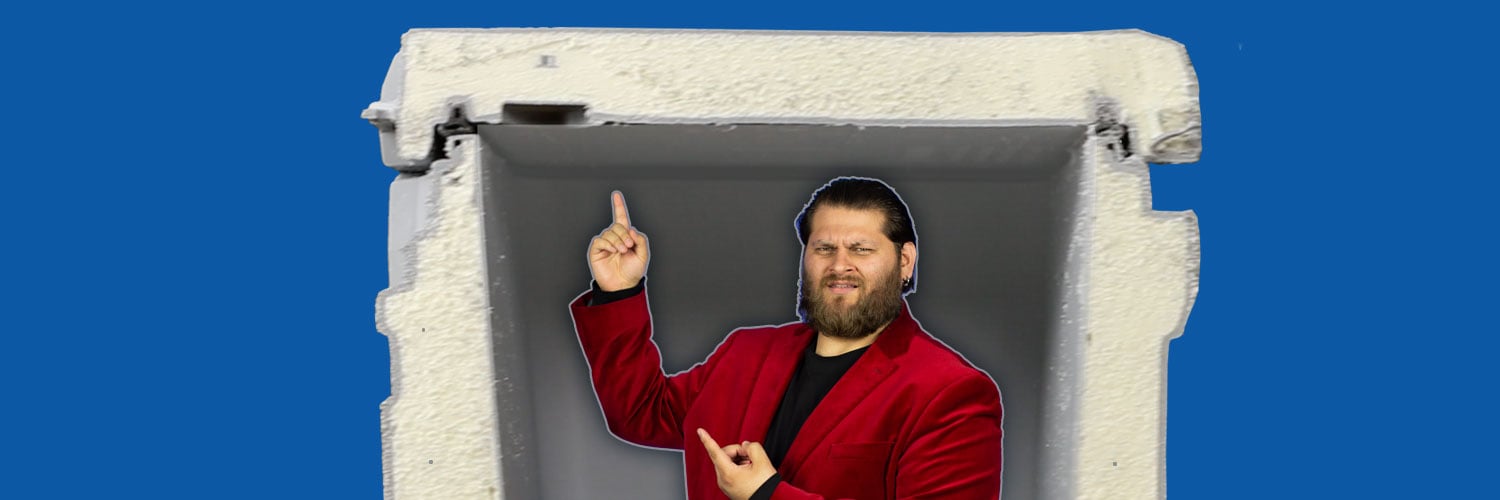What Does Foam Insulation Do?
injection foam insulation | spray foam insulation | RetroFoam insulation | foam university


Foam insulation has been an option to insulate homes since the 1970s and has really started to build momentum over the past 20 years as homeowners look for more energy-efficient materials.
As foam insulation has risen in popularity, so have the number of misconceptions about the material and how it works. One of the biggest questions homeowners have is what does foam insulation do?
Here at RetroFoam, we have been in the injection foam insulation business for more than 35 years. We have dealers across the U.S. who explain to homeowners every day exactly how RetroFoam injection foam insulation works.
We strive to provide every piece of information possible to homeowners considering updating their home insulation to foam. Below you will find all of the information you need to understand how foam insulation works.
What is Spray Foam Insulation?
Before we jump into how foam insulation works, first, we need to address the two types of foam insulation.
There are a lot of people out there who use the term spray foam when they’re really talking about injection foam. So, what is the difference between injection foam insulation and spray foam insulation?
It all comes down to where and how they are installed.
Let’s dive right in.
What is Spray Foam Insulation?
Spray foam is an insulation material that creates an air seal in open cavities, like attics, crawl spaces, and rim joists.
During a remodeling project, if the wall cavities are exposed, they can be sprayed inside them as well. Other areas that are ideal for spray foam insulation are around electrical boxes, light fixtures, and where the walls of a home meet the windows and doors.
You can use spray foam insulation in the open cavities of existing homes, in new build homes, commercial buildings, and pole barns. This material, much like injection foam, doesn’t shift, settle, or sag, and it never loses its shape like traditional insulation is known to do.
Spray foam insulation fills all of the cracks, crevices, and gaps where it is installed.
What is Injection Foam Insulation?
Injection foam insulation, much like RetroFoam, is a material that is designed to insulate enclosed wall cavities.
Injection foam insulation has the consistency of shaving cream, which means as it is injected into the wall, it will work its way around any pipes or electrical. If there is existing insulation in the wall, the injection foam will compress it, so there is no need to remove the old fiberglass.
A bonus of injection foam is that there is no need to tear out your drywall to install it.
How Does Foam Insulation Work?
Finally, we’re down to the meat and potatoes of what you want to know – how does foam insulation work.
Much like other home insulation products, foam slows down the transfer of heat. It just does it better. Actually, foam insulation is the only material that creates an air seal in the home.
Let’s use some real-world examples to explain better how foam insulation works.
When you get coffee from your local gas station, it comes in a paper cup. To prevent the heat from the coffee from burning your hand, you have to put on a protective sleeve.
Now, when you go to another gas station, they use styrofoam cups. You don’t need the protective sleeve with these cups because the foam slows the heat.
We love our coffee and fill up the thermos on the way out of the house in the morning. You may not get to pour that cup of Joe right away, but when you finally do get to it, your coffee is still nice and hot. So, how does that work?
A thermos is a large container that really only holds about 32-ounces. The thermos looks a lot bigger than it is, but that is by design. This design actually reduces heat loss from the thermos.
The manufacturer of the thermos has eliminated heat loss from the thermos by creating a sealed air space between the metal lining inside the container that makes contact with the liquid and the outside. This air space is why the thermos looks so big.
The thermos isn’t insulated with a material inside, it’s actually insulated with that air space. No matter how cold it is outside, the cold air can’t get through the air seal to your hot coffee.
Just like creating an air barrier in your home with foam insulation. Foam works to keep the air you pay to heat or cool inside while keeping those outside elements out.
Why Use Spray Foam Insulation in Your Home?
Using foam insulation in your home creates an air barrier that just isn’t possible with fiberglass or cellulose.
Traditional insulation still allows for air movement which will lead to higher utility bills, overworked appliances, and an uncomfortable house.
Another great analogy.
Think of your home as an airtight cooler. You don’t want the outside air getting inside, and you don’t want to waste money as the air you pay to treat leaks out.
This is similar to when you put ice cold drinks in your cooler. There’s nothing less refreshing than grabbing what you expect to be a cold drink from the cooler and it is warm.
Expensive coolers have thick walls, thick bottoms, and thick tops that are actually filled with foam. Each part of the cooler is filled with foam, so it creates an air seal.
When your home is insulated with foam, you get that same air seal. Just like your cooler, you want the inside of your home to maintain the temperature you want.
Now that you know how foam insulation works, you might be on the hunt for a RetroFoam dealer near you. Check out the Dealer Finder on our website to find foam insulation in your area.
If you’d like to do more research before making the call, check out our Learning Center where you’ll find a ton of helpful resources.
Related Articles
About Amanda Emery
Amanda previously has worked as a breaking news and crime reporter, TV news producer, and editor. As a journalist, she has won several awards from The Society of Professional Journalists - Detroit Chapter and the Michigan Press Association. Amanda uses her experience as a journalist to write content that will help educate homeowners on foam insulation benefits. When Amanda isn’t writing, she’s spending time with her husband Chris, daughter Lilith-Maeve, and rescued huskies Danger and Wendigo. She also loves knitting, making art, and cooking.



